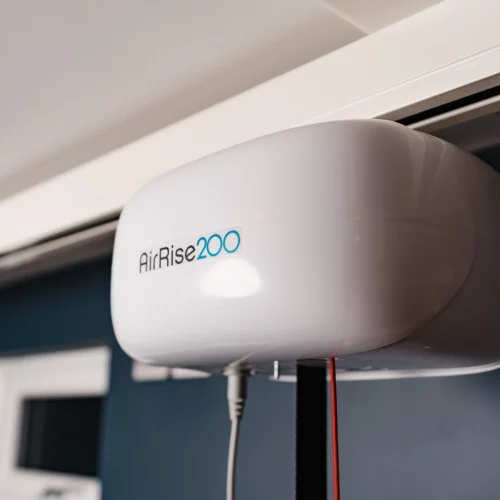Essential SEN Provisions
To effectively support SEN students, mainstream schools must implement robust provisions. A dedicated Special Educational Needs Coordinator (SENCO) should oversee support strategies, ensuring Individualised Education Plans (IEPs) are in place to cater to each student’s specific needs. Teachers and staff should receive regular SEN training, and assistive technology, such as speech-to-text software and adaptive keyboards, can help students access the curriculum more easily.
Additionally, schools should ensure that specialist support, such as speech and language therapists or occupational therapists, is readily available. Early identification and intervention are crucial, so regular assessments and screenings should be carried out to address potential challenges before they become significant barriers to learning.
Inclusive Teaching Methods
A flexible approach to teaching is vital. Differentiated learning should be embedded into lesson plans, allowing for adjustments based on individual needs. Multi-sensory teaching methods—incorporating visual, auditory, and kinesthetic elements—can enhance understanding. Clear and consistent instructions, smaller class sizes, or breakout groups can also help students stay engaged and focused.
Teachers should adopt a growth mindset and work closely with SENCOs to refine their teaching techniques. Peer-assisted learning, where students collaborate and support one another, can also be a valuable strategy to foster inclusivity in the classroom. Providing alternative ways for students to demonstrate their learning, such as oral presentations, project-based work, or practical assessments, ensures that all students can achieve success.
Adapting the School Environment
Many SEN students struggle with sensory sensitivities or physical barriers. Schools should provide quiet spaces for those needing a break from sensory overload, ensure classrooms are accessible for students with mobility needs, and minimise excessive noise. Visual timetables and communication aids can support students who find verbal instructions challenging.
Moreover, adjustments such as non-fluorescent lighting, noise-reducing panels, and calming colour schemes can significantly improve the learning environment for students with sensory processing disorders. Schools should also offer flexible seating arrangements, standing desks, and sensory-friendly tools like fidget aids to support concentration.
Equipment for specialist education environments can be specified on a case-by-case basis to ensure the best options are available for all students.
Encouraging an Inclusive Culture
When looking at how to make mainstream schools SEN-friendly, promoting a supportive peer culture is crucial. Schools can introduce buddy systems, anti-bullying initiatives, and awareness campaigns to encourage understanding and empathy among students. Educating all pupils about SEN helps create an environment where diversity is respected and supported.
Teachers should also incorporate SEN-focused discussions into the curriculum, ensuring that students understand how people learn. School-wide assemblies, guest speakers, and inclusion weeks can reinforce the importance of empathy and support for SEN students. Encouraging student-led initiatives, such as peer mentoring programmes, can further strengthen the sense of inclusion within the school community.
Parental and Community Engagement
Collaboration between schools, parents, and external professionals strengthens support for SEN students. Open communication between parents and teachers ensures individual needs are met effectively. Schools should also engage specialists such as therapists and educational psychologists and offer workshops to help parents support their child’s learning journey.
Community engagement is equally important. Schools should work with local organisations, charities, and businesses to provide additional resources and support for SEN students. Extracurricular activities should also be adapted to be inclusive, allowing students of all abilities to participate in clubs, sports, and creative arts programmes.
Conclusion
Making mainstream schools SEN-friendly requires a comprehensive approach, integrating strong SEN provisions, inclusive teaching methods, environmental adaptations, peer support, and community engagement. By prioritising these elements, schools can create an education system where every child, regardless of ability, has the opportunity to thrive. When schools commit to inclusivity, they foster an environment where every student is valued, supported, and given the tools to reach their full potential.
FAQs for Making Mainstream Schools SEN-Friendly
What is an SEN-friendly school?
An SEN-friendly school is one that provides tailored support, inclusive teaching methods, and an accessible environment to ensure students with special educational needs can thrive.
Why is a dedicated SENCO important?
A Special Educational Needs Coordinator (SENCO) oversees support strategies, ensures Individualised Education Plans (IEPs) are in place, and helps staff implement effective SEN provisions.
How can schools create an inclusive learning environment?
Schools can use differentiated learning, multi-sensory teaching methods, peer-assisted learning, and flexible assessments to accommodate diverse learning needs.
What environmental adaptations help SEN students?
Quiet spaces, sensory-friendly classrooms, non-fluorescent lighting, noise-reducing panels, and flexible seating arrangements improve accessibility and comfort for SEN students.
How can schools encourage an inclusive culture?
Buddy systems, anti-bullying initiatives, awareness campaigns, and student-led mentoring programs foster empathy and support among peers.
Why is parental and community engagement important?
Collaboration with parents, therapists, and local organisations strengthens SEN support, ensuring students receive the resources they need both in and outside of school.


